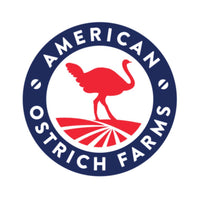There has been a recent surge of interest in switching from plain, simple kibble to a raw diet for a lot of our furry friends. We've done some of the research and we're here to tell you the tips, tricks, pros and cons of raw feeding.

WHAT ARE THE BENEFITS?
Raw foods are less processed than kibble, which generally means they'll have retained more of their nutrient content and those nutrients will still be in their natural form. The nutrient density of raw foods can contribute to better joint and bone health, an improved immune system, better coat and skin condition, superior dental health, reduced stool volume and odor, reduced body odor, as well as an overall peace of mind, knowing there’s no added filler, preservatives, or other 'junk' being put in your pet's food. In most cases, raw foods are also easier to digest than commercially prepared foods, allowing your pet's organs to absorb nutrients better than eating only kibble.

WHAT ARE SOME OF THE CONS OF SWITCHING TO RAW FEED?
If you’ve sourced your food incorrectly or have expired meat, you could potentially introduce dangerous bacteria or pathogens in raw food. Raw bones can pose a choking hazard to dogs and could chip their teeth if they’re not carefully watched. Last, but certainly not least, the cost of raw feeding is higher compared to a bag of kibble.

HOW EARLY CAN YOU START A DOG ON A RAW DIET?
If you’re looking into adopting a puppy, 8-12 weeks is the recommended age where you can start weaning them from milk to a raw diet over the course of 1-6 weeks to ensure there’s no upset stomachs during the transition. If you notice the puppy's stool is becoming loose in consistency, it may be a sign that the transition is too fast. Dial back down until the stool is a normal consistency and then increase the frequency of raw feedings. Feeding raw at a young age has been proven to allow for proper muscle and bone growth, healthy teeth, and a stronger immune system.

CAN I FEED A RAW DIET IF I HAVE A PREGNANT FEMALE?
Studies show feeding the mother raw food prior to giving birth can improve the quality of the puppy when it comes to immunity, health and growth. However, switching the mother to a raw diet during pregnancy is not recommended. It is important to get your dog started on a raw diet prior to her pregnancy, to ensure her immune system is working properly. If she is further than 6 weeks along, it's recommended to wait until the puppies are born to switch to a raw diet to prevent any upset stomachs or unnecessary stress on the mother.

CAN I SWITCH MY ADULT DOG TO RAW FEEDING?
The short answer is you can always switch your dog to raw feeding, but always be sure to speak with your veterinarian prior to making any changes to ensure the best quality of life for your dog, no matter the age. Another thing to keep in mind: it's important to include more than just meat in an animal’s raw diet. Speak with your veterinarian about your pet's specific dietary needs, including micronutrients, vegetables, grains (if possible), eggs, varying proteins etc.

HOW DO I INCORPORATE RAW FEEDING?
Again, lean on your veterinarian here, but many resources suggest you start off by feeding them one small meal of raw foods in the morning and their regular kibble later in the day to slowly start the switch. If you don't notice any negative changes in your pet's health or behavior over several days, you can gradually increase the percent of raw foods in their diet until they've transitioned completely.

HOW DO I START SWITCHING TO A RAW DIET?
An easy way to being introducing raw foods is to add our nutrient dense freeze-dried ostrich steak, organs, and protein topper to their kibble as an added treat. With the exception of our Egg Bites (which are baked), our pet treats are made with raw meat. As your furry friend adapts, consider feeding them fresh ostrich liver and heart, or meaty necks. We also recommend our raw marrow bones for chew-happy dogs, or if you’re simply wanting to take better care of their teeth and gums, while adding mental stimulation to their day.






